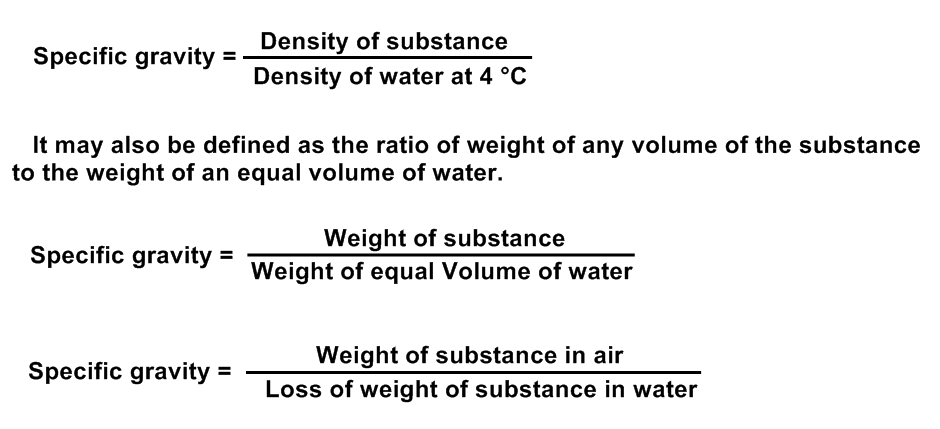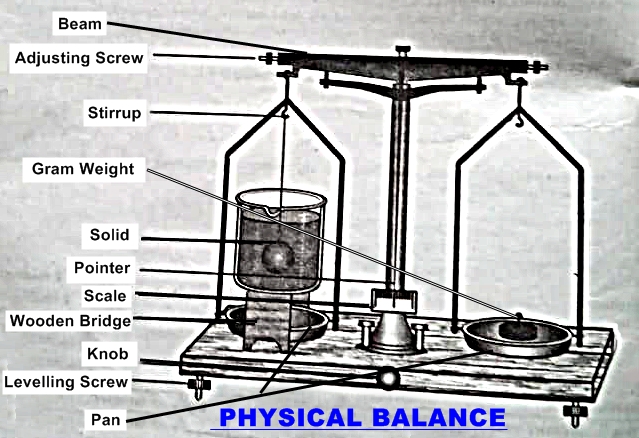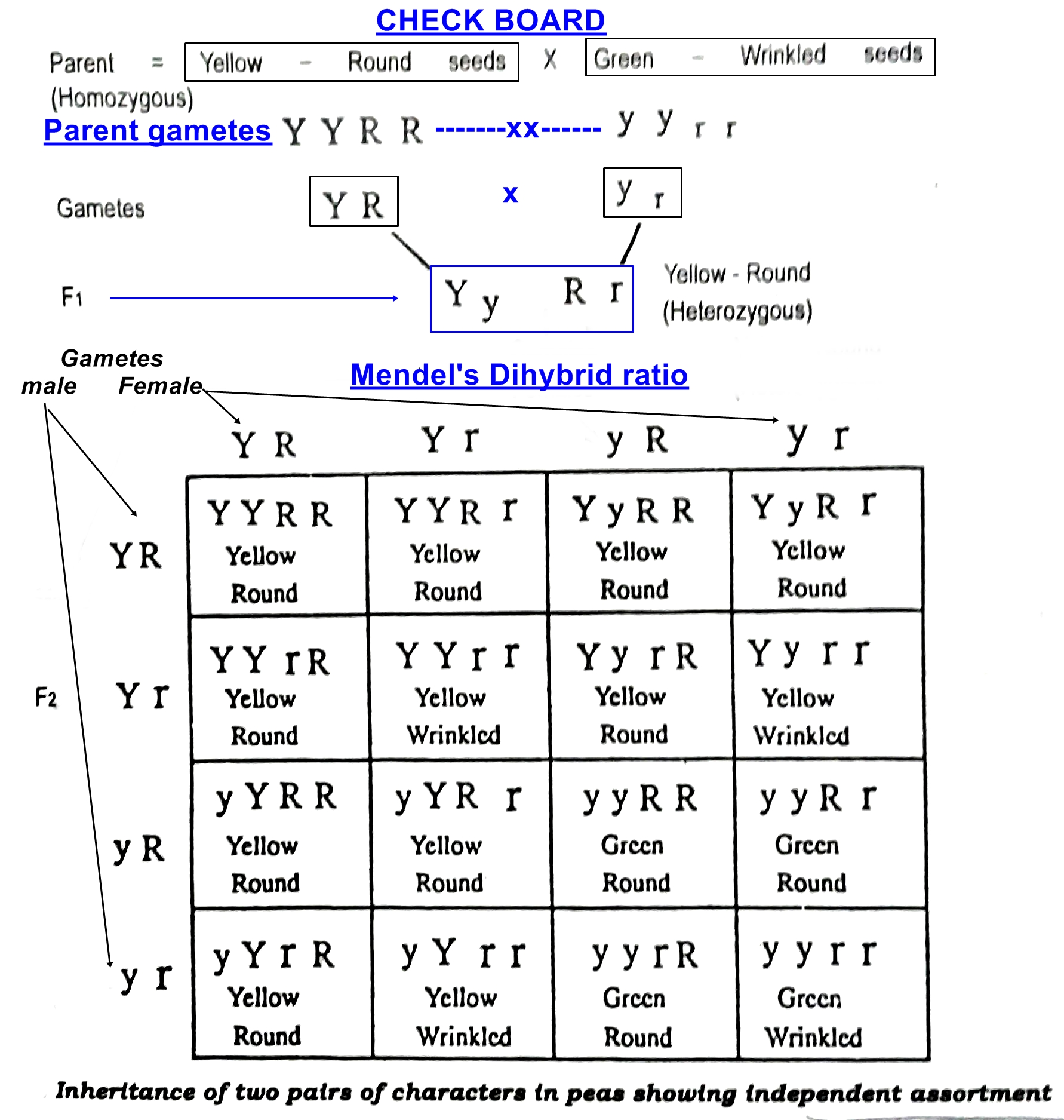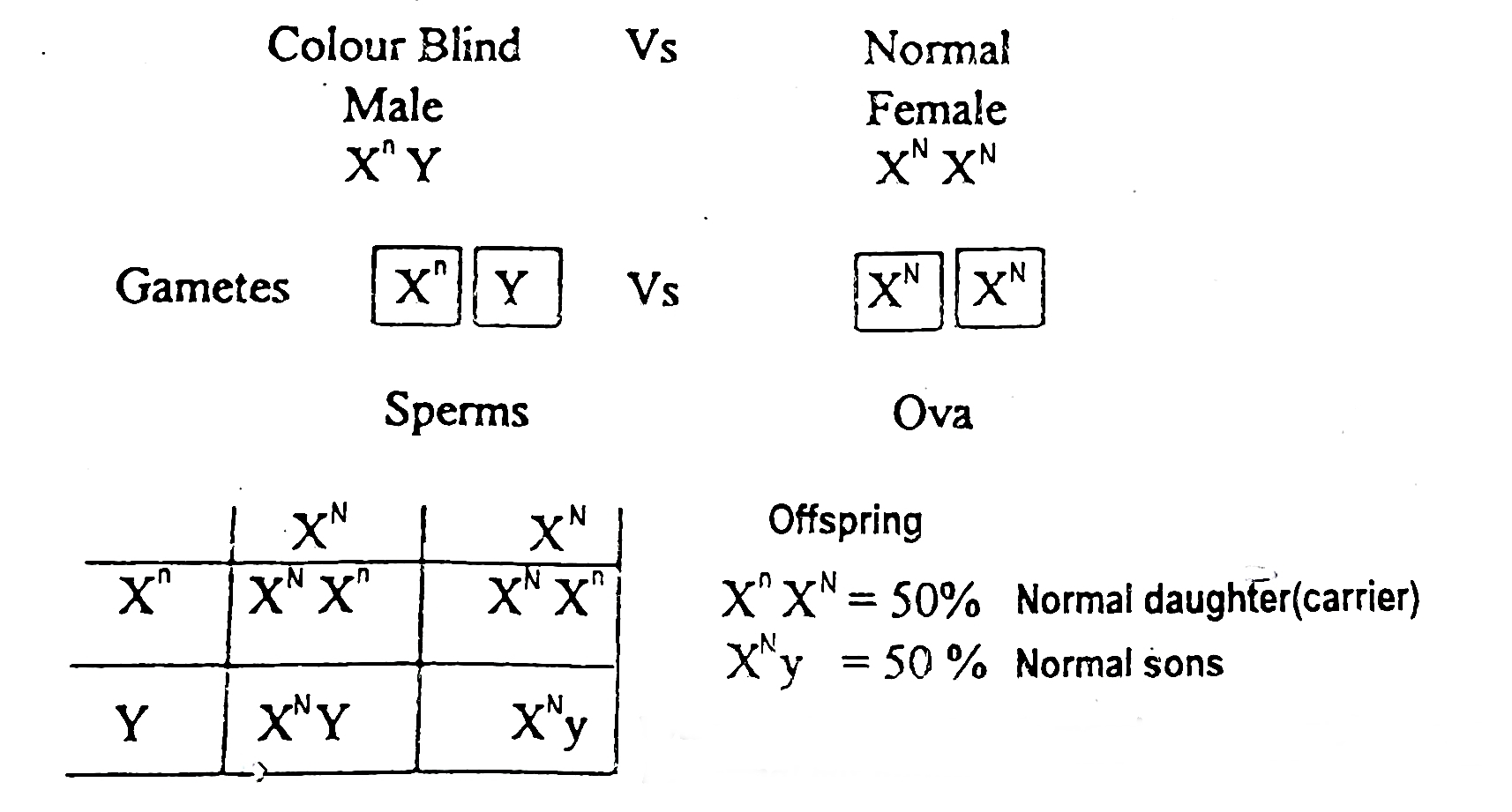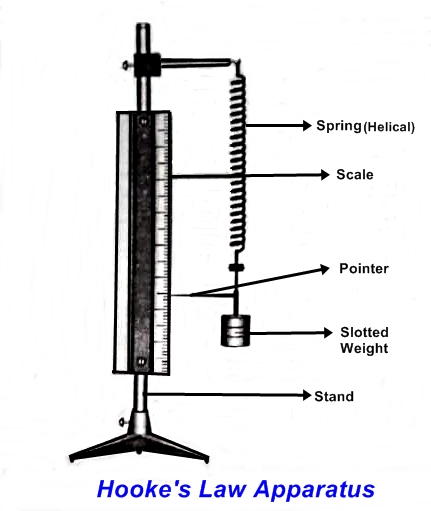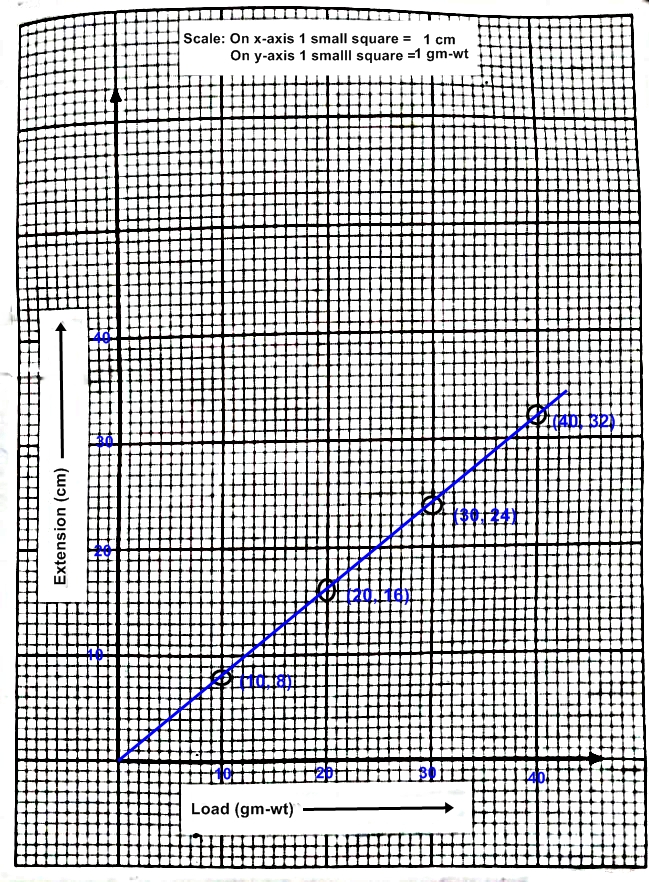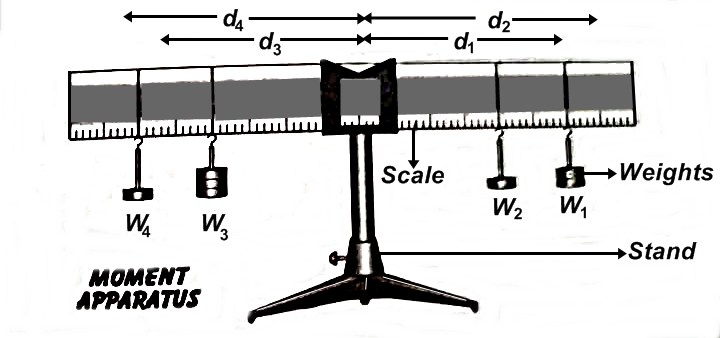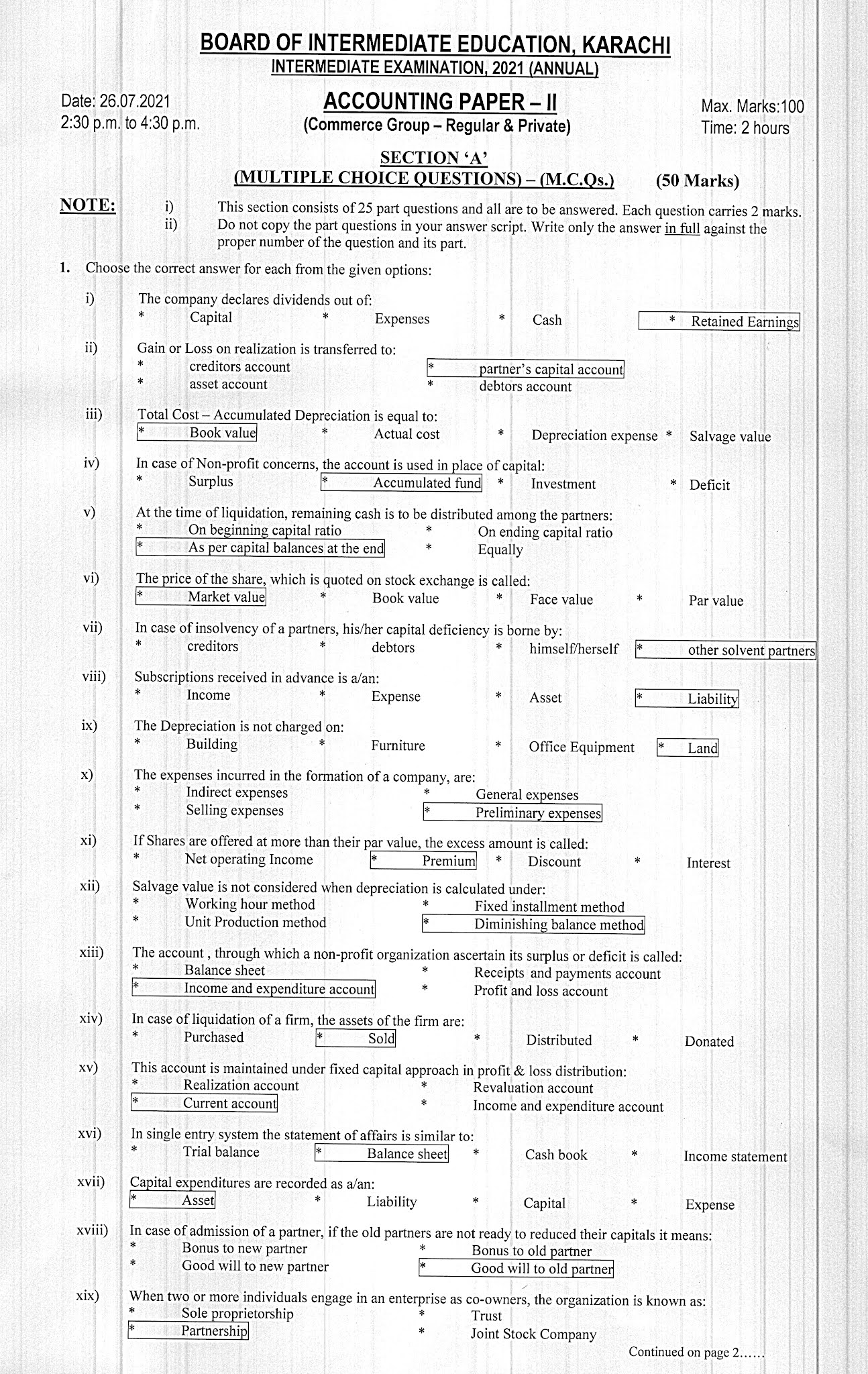Search This Blog
Tuesday 10 August 2021
Saturday 7 August 2021
Physics Practicals - For Class IX and X (Science Group) - PRACTICAL 04(X) 05(IX): Find the Specific Gravity of a body heavier than water by Archimedes principle.
Go To Index
PRACTICAL 04(X) 05(IX):
Find the Specific Gravity of a body heavier than water by Archimedes principle.
APPARATUS:
- Physical balance
- Weight box
- Insoluble solid
- Beaker
- Water
- Bench
- Thread
THEORY:
ARCHIMEDES'S PRINCIPLE:
When a body is partially or wholly immersed in a liquid, due to upthrust it appears to lose some of its weight. The loss in weight of !he body is equal to the weigh of the liquid displaced.
SPECIFIC GRAVITY OR RELATIVE DENSITY:
It is the ratio of density of the substance to the density of water at 4 °C.
METHOD: (2 Marks)
- Adjust the balance with the help of adjusting and leveling screw.
- Suspend the bob in left-hand pan with thread.
- Find the weight of bob in air.
- Place a wooden bridge across left pan and place a beaker containing water.
- Find Weight of bob in water such that it does not touches the side wall of beaker. Bob should remain in water when beam is raised.
OBSERVATIONS: (5 Marks)
| OBS. | WEIGHT OF SOLID IN AIR W1 (gm-wt) |
WEIGHT OF SOLID IN WATER W2 (gm-wt) |
LOSS OF WEIGHT OF SOLID IN WATER W1 - W2 (gm-wt) |
|---|---|---|---|
CALCULATIONS:
FORMULA (1 Mark)
Specific gravity = ----------------- = --------------------
RESULT:
Specific gravity of given solid is found to be = ----------
FIGURE: (2 Mark)
PRECAUTIONS:
- Physical balance must be adjusted.
- Pan must not touch the wooden bench.
- Use foreceps to take weights from the weight box.
Special Thanks to Sir Sajjad Akber Chandio
Friday 6 August 2021
Chapter No.6 : Chromosomes And DNA - Botany - For HSC Part 2 (XII) - Science Group
GO TO INDEX
Chapter No.6
Chromosomes And DNABotanyFor HSC Part 2 (XII) Science Group
Chromosomes And DNA
Q.No.7: Explain ultrastructure of Chromosomes.
Ans: Ultrastucture of Chromosomes:
The chromosome of a eukaryotic cell has 40%. DNA and 60% protein. A significant amount of RNA is also associated with chromosome because DNA is responsible for RNA formation. The DNA of a chromosomes is very, long double stranded fiber that stands, a duplex which extends unbroken through the entire length of chromosome.
A typical human chromosome has 140 million nucleotide in its DNA. The amount of information Coded in one chromosome fills about 280 books of 1000 pages. If a strand of a chromosome is laid in straight line, it would be 5 cm long.
Under electron microscope DNA of a eukaryotic cell show following Ultrastucture of Chromosomes:
Nucleosome:
The coiling of DNA is like string of beads. DNA duplex is coiled around a complex histone, which are small, very basic polypeptides, rich in the amino acids, arginine and lysine. Eight of these histone form the core of an assembly called a 'NUCLEOSOME'. Because so many of their amino acids are basic histones are very positively charged. The DNA duplex, which is negatively charged, is strongly attracted to histone and wraps tightly around the histone core of each nucleosome. The core thus acts as a magnetic forms that promotes and guides the coiling or DNA. Nucleoprotein (histone) gives DNA fiber as a beaded structure. The nucleosome is repeated after every 200 nucleotides of DNA.
Spacer DNA:
The DNA present from one nueleosome (bend) to an other is called Spacer DNA.
Super Coil:
Further coiling of DNA occurs when the string of nucleosome wraps into higher-order coils called Super Coil.
Chromatin:
The super coil network is called chromatin (Chromatin network) Chromatin is a loose network of threads which is seen in non living nucleus. Chromatin is again classified into Euchromatin and heterpchromatin on the basis of staining properties.
Heterochromatin:
Stains deeply because it is more coiled and compact it is inactive and never expressed itself.
Euchromatin:
Stains more during nuclear division and is involved in transcription (Protein Synthesis).
Chapter No.8 : Variation And Genetics - Botany - For HSC Part 2 (XII) - Science Group
GO TO INDEX
Chapter No.8
Variation And GeneticsBotanyFor HSC Part 2 (XII) Science Group
Variation And Genetics
Q. No.6: Define "Law of Independent assortment" and explain with checkerboard.
Ans: Statement Of Mendel's Second Principle (Law of Independent Assortment):
Gregor John Mendel's proposed the Law of Independent Assortment, which state that:
"The memberof one pair of genes segregate independently of the other pairs."
OR
"Members of one pair of factor segregate (assort) independently of members of another pair of factor. Therefore all possible combinations of factors can occur in gametes."
OR
"When a pair or contrasting characters are followed in one cross, their genes assort independently into gametes, gave of one pair inherit independently of the other pair, therefore all possible combinations of genes can occur in gametes."
Mendel's Procedure:
After working on several monobybrid crosses, Mendel took two traits for cross between two individuals. Such cross is called dihybrid cross, and the ratio obtained in F2 generation is called dihybrid ratio. The result achieved as a consequence of dihybrid-cross is spoken of as Inheritance of two traits.
Mendel experiments on garden peas. He took 4 units of characters such as;
- Yellow Flower (YY) with round seeds (RR)
- Green Flower (yy) with wrinkled seeds (rr).
F1 generation produced all flower yellow with round seed as both the traits were dominant.
But when seeds of F1 generation were collected and sown, the segregation of characters took all possible combinations and produced 4 kinds or offspring in F2 in the following ratio:-
9 Yellow round.
3 Yellow wrinkled.
3 Green round.
1 Green wrinkled.
i.e. 9 : 3 ; 3 : 1.
It has also been noticed that some of them were homozygous and some were heterozygous.Among the 4 kinds of offspring, two showed parental combination (Yellow round and green wrinkled) while two were new i.e. Green round and Yellow wrinkled. This means that trait of round seed was not tied with yellow colour and it was inherited independently. This exchange of genes (trait) takes place during crossing over which provides an opportunity for new varieties.
Result:- Thus we obtained a ratio 9 : 3 : 3 : 1
Q.No7: What do you mean by sex determination? Discuss linked inheritance with reference to colour blindness.
Ans: SEX CHROMOSOME:
The biologist tried to determine, whether an offspring will be male or female in an egg. The first information on sex came from Cytological studies by C.E. Mc Clung, E.B Wilson and N Steven between 1901-1905.
It was found that in plants and animals most of the chromosomes are pairs of homologous chromosomes, the members of one pair are not homologous, i.e. the two differ from each other morphologically in both male and female.
"This odd chromosome, which determines the sex of the individual is termed as "sex chromosomes".
The sex chromosomes are non-homologous and are mostly represented by 'X' and 'Y' chromosomes and they can not form pair.For example: In human being, the difference in males and females is not of one whole chromosome, but of the shape of one chromosome in one sex, which is unlike its mate and unlike any chromosome in the opposite sex. In man each sex cell has 46 chromosomes, of which 44 i.e. 22 pairs are similar in both sexes, these are called autosomes. The 23rd pair in female consists of two similar chromosomes, but in the male of the 23rd pair differ in shape, one of the two is like those of the female, but the second is much smaller, these are called sex chromosomes. The two chromosomes of the female and one of the male which are alike known as X chromosomes, while the unlike smaller one only in male is called Y chromosome. The human female possesses a genotype of 44 + XX chromosomes, whereas the genotype of male is 44 + XY chromosomes.
Linked Inheritance:
A form of inheritance in which the transmission of the genetic material is coreeelated with the sex of the parents is called sex linked inheritance.
OR
Any genetic trait which is transmitted through sex chromosome is called sex linked inheritance.Linked Inheritance With Reference To Colour Blindness:
It is a sex-linked inheritance found in human beings. Persons suffering from colour blindness have difficulty in distinguishing red from green. It is a rather common trait and more common in males. It is because Y chromosome is inherit for this trait. Only one gene of this trait will render a colour blind man. While on the other hand a woman must have two genes for this trait to become colour blind. This trait of colour blindness can easily be detected by using special charts made up of a number of coloured dots so arranged that colour blind persons see a different pattern than other persons do.
The possible results of various crosses are shown in the following charts.
Gene on chromosome
N = Normal eyed male
n = Colour blind female
(i) CROSS BETWEEN COLOUR BLIND MALE AND NORMAL FEMALE:
Result: When a colour blind male marries a normal female, all children will be normal but daughters will be colour blind carrier.
Tuesday 3 August 2021
Physics Practicals - For Class IX (Science Group) PRACTICAL 04: To study the relation between "Load" and "Extension" of a helical spring by drawing a Graph.
Go To Index
PRACTICAL 04:
To study the relation between "Load" and "Extension" of a helical spring by drawing a Graph.
- Elastic spring (Helical spring)
- Hooke's Law stand with scale
- Slotted weights
- Pointer
THEORY:
ELASTICITY:
The property of a body to regain its original shape when deforming force have been removed called elasticity.
STRESS:
Recovering force per unit area called stress. Its units is Newton per square meter (N/m2).
STRAIN:
Fractional changes in length, volume or shape called strain. Change in length per unit original length is called linear stress.
HOOKE'S LAW:
Within elastic limits stress is directly proportional to strain.
Stress ∝ Strain
Stress / Strain = Constant
Extension (F) ∝ Load (l)
F = kl
F / l = k
METHOD: (1.5 MARKS)
- Place iron stand on horizontal surface and suspend spring with the help of hanger of slotted weights and adjust pointer at zero.
- Add one slotted weight (of 20 gm-wt) in the hanger.
- Note down the position of pointer on the scale.
- Take five observation by increasing the load step by step each time note down the position of pointer on the scale when pointer is at rest.
- Calculate the extension of each load.
- Calculate the ratio of F/l for each observation.
OBSERVATION:
| S.No. | Applied Force (F) load (gm-wt) |
Pointer Reading (l) extension (cm) |
F / l (gm-wt / cm) |
|---|---|---|---|
| 1, | |||
| 2. | |||
| 3. | |||
| 4. | |||
| 5. |
FIGURE: (1 MARKS)
GRAPH: (2 MARKS)
- Draw x and y-axis on the graph paper.
- Take load 'F' on x-axis and extension 'l' on y-axis.
- Supply suitable scale. Plot values of 'F' and 'l' from observation column.
- Draw line, which join the points.
(Note: This is a sample graph with assuming readings. The graph should be in a straight line if correct readings are obtained.)
RESULT: (0.5 MARKS)
Since ratio between "F" and :l" is constant and graph between F and l is a straight line therefore load and extensions are directly proportional to each other.
PRECAUTIONS:
- Stand must be vertical.
- Turns of the spring should not overlap each other.
- Pointer reading must be taken by keeping the eye at its level.
Special Thanks to Sir Sajjad Akber Chandio
Chapter No.7 : Cell Cycle - Botany And Zoology- For HSC Part 2 (XII) - Science Group
GO TO INDEX
Chapter No.7
CELL CYCLEBotany And ZoologyFor HSC Part 2 (XII) Science Group
CELL CYCLE
Q.5: Define Meiosis. Explain the various stages of Prophase -I of meiosis.
Ans: MEIOSIS:
Meiosis is a cell division in which one cell divides into four cells and the number of the chromosomes is reduced to half. Meiosis occurs in diploid cells during gametogenesis. Meiosis consists of two successive divisions, Division I and Division II.
Division I is reduction division, during which the chromosomes number (2n) in both daughter cells is reduced to half (n).
Division II is simple mitotic in nature.
Each division passes through four phases, as:
1st Meiotic Division
- Prophase I
- Metaphase I
- Anaphase I
- Telophase I
2nd Meiotic Division
- Prophase II
- Metaphase II
- Anaphase II
- Telophase II
PROPHASE I:
Prophase of first meiotic division is longer in duration and complicated. It passes through five sub-stages.
- Leptotene
- Zygotene
- Pachytene
- Diplotene
- Diakinesis
Leptotene = (Slender):
- This is the first stage of meiosis.
- The chromatin material condenses to from thread like structures called chromosomes.
- Before meiosis starts, the chromosomes become duplicated which is DNA replication, but the two chromosomes are so close that they look like a thread.
- The identical pairs, Maternal and Paternal chromosomes remain unevenly distributed.
- The centrioles move to the opposite poles.
Zygotene = (Joining):
- The chromosomes shorten and thicken.
- The homologous (maternal and paternal) chromosomes attracts each other and start pairing, the process is called SYNAPSIS.
- The pairing is very exact and is point to point and gene to gene.
- The two synapped chromosomes are called BIVALENTS.
Pachytene = (Thick):
- After pairing, the chromosomes become thick and short.
- The homologous chromosomes twine around each other and each starts splitting into two sister chromatids by a longitudinal splitting except in the centromere region.
- Due to this splitting, the bivalent becomes tetravalent (with four chromatids).
Diplotene = (Double):
- The synaptic force of attraction between each bivalent consisting of four chromatids decrease.
- The homologous chromosomes start repelling each other but mostly uncoiled i.e. overlapping areas remain contact in one or more points.
- This point of contact is called chiasma (Plural: Chiasmata).
- The overlapping occurs at non-sister chromatids.
- At chiasmata the chromatids breaks. This breakage is accompanied by reunion in such a way that corresponding fragments are interchanged between the two non-homologous chromosomes, this physical change is called crossing over.
- Crossing over is significant in heredity.
Diakinesis = (Through movement):
- Diakinesis is characterized by the disappearing of the nuclear membrane, nucleolus and completion of spindle apparatus.
- The separation of bivalent is completed by the process called terminalization.
- The movement of the chiasmata from the centromere towards the ends of the chromosome arms take place like a zipper.
- At the end of stage, the two chromatids held together at their ends and the bivalent become more thickened, contracted and prominently visible.
Monday 2 August 2021
Physics Practicals - For Class IX (Science Group) PRACTICAL 03: To verify the Principle of Moment by using a meter rod balanced on a wedge.
Go To Index
PRACTICAL 03:
To verify the Principle of Moment by using a meter rod balanced on a wedge.
APPARATUS:
- Metallic stand with sharp wedges block
- Uniform meter scale
- Weights
- Thread Or Hooks
THEORY:
Torque or moment of force is the measuring effect of force produced in a body about certain axis.
Torque = Force x Force arm
T = F x d
Its unit is Newton-meter. Anti clock wise torque is positive and clockwise torque is negative.PRINCIPLE: (1 MARK)
If algebraic sum of all the torque is zero the body is said to be is equilibrium.
MATHEMATICALLY:
Anti clock wise Torque = Clockwise Torque
METHOD: (2 MARK)
- Pivot the meter rod in horizontal position from its mid point.
- With the help of thread loops or hooks suspend two different weights W1 and W2 on the right hand side, and W3 and W4 on the left hand side of the fulcrum.
- Adjust these weights so that the meter rod is again horizontal.
- Note down the value of W1, W2, W3 and W4, and their corresponding moment arms d1, d2, d3 and d4.
- Take these sets of observation by changing weight and their position.
- For each set of observation calculate clockwise and anticlockwise torque.
OBSERVATIONS:
| OBS | CLOCKWISE MOMENTS (TORQUES) | ANTICLOCKWISE MOMENTS (TORQUES) | ||||||
|---|---|---|---|---|---|---|---|---|
| W1 (gm-wt) | d1 (gm-wt) | W2 (gm-wt) | d2 (gm-wt) | W3 (gm-wt) | d3 (gm-wt) | W4 (gm-wt) | d4 (gm-wt) | |
| 1 | ||||||||
| 2 | ||||||||
| 3 | ||||||||
CALCULATIONS:
Sum of clock Torque = Sum of anti clock Torque
W1 X d1 + W2 x d2 = W3 X d3 + W4 x d4
1. ---------- + ---------- = ---------- + ----------
---------- + ---------- = ---------- + ----------
---------- gm wt - cm
2. ---------- + ---------- = ---------- + ----------
---------- + ---------- = ---------- + ----------
---------- gm wt - cm
3. ---------- + ---------- = ---------- + ----------
---------- + ---------- = ---------- + ----------
---------- gm wt - cm
RESULT:
Since in equilibrium position of meter rod, sum of clockwise moments is equal to the sum of anti clockwise moments therefore principle of moment is verified.
FIGURE: (1.5 MARKS)
MOMENT APPARATUS
PRECAUTIONS:
- Weights must be standard.
- Loops of thread must be small and equal in size.
- In equilibrium position scale must be horizontal.
Special Thanks to Sir Sajjad Akber Chandio
Subscribe to:
Posts (Atom)

